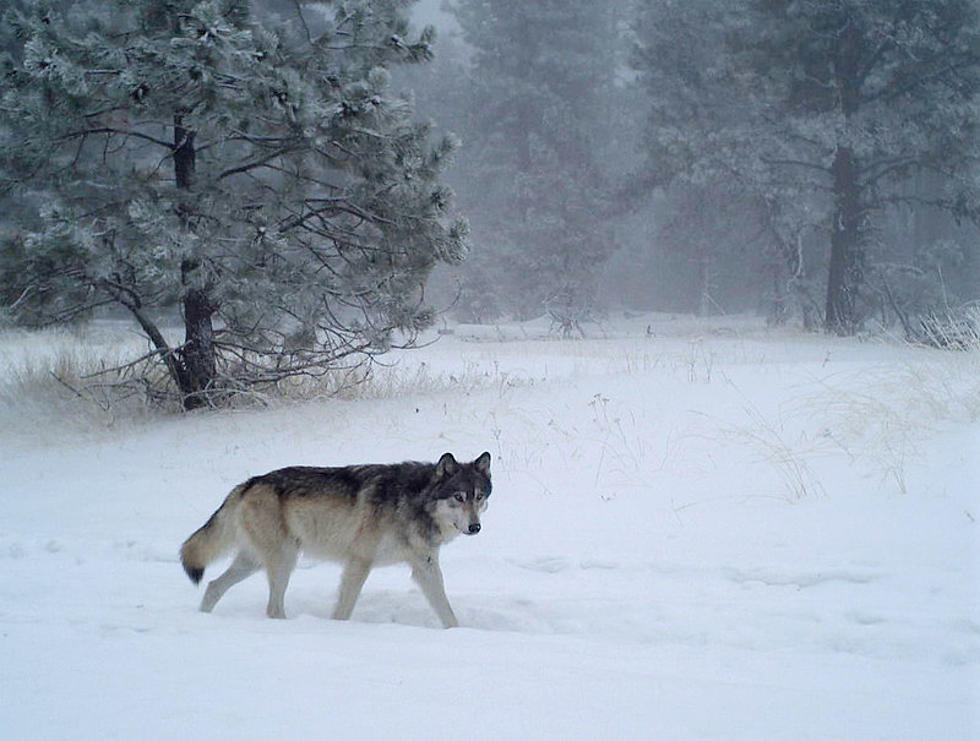
Groups sue to give western wolves Endangered Species protection
Laura Lundquist
(Missoula Current) A coalition of wildlife organizations are suing to get the federal government to list the gray wolf in the Western U.S.
On Monday, 10 organizations filed a complaint in Missoula federal district court against the U.S. Fish and Wildlife Service and the Department of the Interior over the Service’s decision in February not to protect the gray wolf in the Western U.S. under the Endangered Species Act.
The wildlife groups allege that recent regulatory changes in Montana and Idaho have put the more healthy portions of the western wolf population at more risk while the smaller populations in other states aren’t yet large enough to persist on their own.
Therefore, the Fish and Wildlife Service should have considered how changes in state law are affecting wolf populations and dynamics before issuing its finding that an ESA listing is not warranted, according to the complaint.
“The Service’s finding seems to give the green light for states hostile to wolves to follow suit with Idaho, Montana, and Wyoming’s aggressive killing regimes if they are eventually delisted and transferred to state management West-wide,” said Kelly Nokes, Western Environmental Law Center attorney in a release. “This legal challenge asks only for the protections needed for this iconic species to be rightfully restored across the West’s wild landscapes—protections that some states have shown only the Endangered Species Act can really provide.”
After the Montana and Idaho legislatures passed several bills in 2021 to enable more hunting and trapping methods to reduce the wolf populations, 70 nonprofit organizations petitioned the Fish and Wildlife Service to either relist the Northern Rocky Mountain population in Montana, Idaho and Wyoming or create and create and list a Western wolf population segment.
Wolves were reintroduced in the Northern Rocky Mountains in the mid-1990s as an experimental population, and then in 2011, Congress delisted that population. In 2009, the Fish and Wildlife Service outlined three scenarios where it would consider relisting, including a situation where changes in state laws or management were likely to make things worse for wolves.
In the meantime, wolves have been slowly dispersing from the Northern Rocky Mountains to other western states, and outside of the Northern Rocky Mountains, wolves are still protected as threatened. The Fish and Wildlife Service tried to delist all wolves in the lower 48 states in 2020, but wildlife advocates sued. In 2022, a federal court found that the Service failed to consider threats to wolves outside of the Great Lakes and the Northern Rocky Mountains states.
The persistence of wolves nationwide can’t rest on a few core populations, the court said. So wolves stayed on the threatened list.
Then, in its finding issued in February, the agency concluded that the wolves in the Northern Rocky Mountains no longer qualify as a discrete population since they’re related to all the wolves that have migrated to other states. The wolves of the Western U.S. now make up their own discrete population, so all the wolves should be treated the same instead of being protected in one place and not in another.
As of 2022, the states of Montana, Wyoming and Idaho have a combined estimated population of slightly fewer than 2,700 wolves while about 115 wolves exist in other parts of the West.
However, those estimates may not accurately reflect the wolf populations. The complaint uses recent statistical analyses to question the models that Montana and Idaho use to estimate wolf populations. The complaint also quotes the Fish and Wildlife Service as saying the population estimates may be biased and “acknowledges that it has been suggested that direct monitoring of wolves, rather than the methods currently employed by the states, may be necessary to produce reliable estimates of abundance.”
In addition, since the states of Montana and Idaho want to reduce their wolf populations to between 400 and 500 wolves, such small populations could slow dispersal to other states and could lead to inbreeding problems over the long term, according to geneticists.
Because wolf management in Montana, Idaho and Wyoming has become more harmful since 2021 to individual wolves and to pack solidarity - packs tend to break up when certain members are lost potentially leading to more human conflict - and because wolf populations in other western states are so small, the wildlife groups are arguing that the agency didn’t do a thorough analysis before deciding that listing of Western wolves was not warranted.
Even though the Fish and Wildlife Service determined that the impacts from human-caused mortality, disease and parasites, and genetic diversity and inbreeding are not
likely to put the gray wolf in the Western U.S. is in danger of extinction, the wildlife groups say the service didn’t carefully analyze the effects of inadequate regulatory protections and cumulative threats.
The groups, represented by the Western Environmental Law Center, include Western Watersheds Project, Western Environmental Law Center, International Wildlife Coexistence Network, Predator Defense,Protect the Wolves, Trap Free Montana, WildEarth Guardians, Wilderness Watch, Alliance for the Wild Rockies, Friends of the Clearwater, and Nimiipuu Protecting the Environment.
The lawsuit was filed a week after wildlife advocates reacted strongly to news that a Wyoming man, Cody Roberts, showed up at a bar with a live yearling wolf that he had run over with his snowmobile, injuring it. Roberts had taped the wolf’s mouth closed and drove it to the bar where he showed it off to the patrons before taking it out behind the bar to shoot it. Roberts was fined $250 for having live wildlife in his possession.
In Wyoming, wolves are managed as a “predatory animal” and may be shot and killed during any time of the year with no limits or license.
Contact reporter Laura Lundquist at lundquist@missoulacurrent.com.
